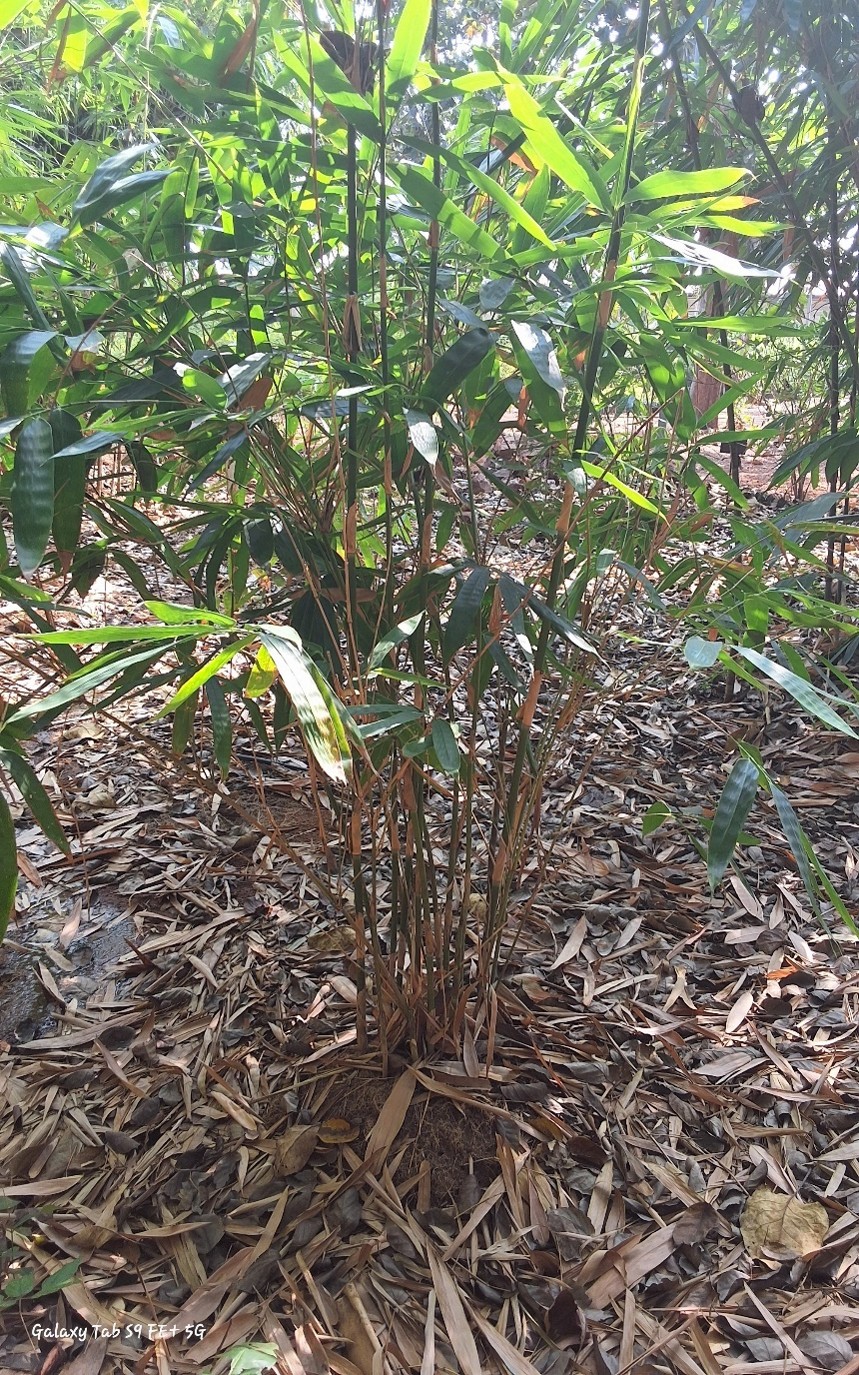Melocanna baccifera

Melocanna baccifera
Melocanna baccifera commonly known as Indian Small Bamboo, is a clumping bamboo species native to the tropical and subtropical regions of northeastern India, Assam, West Bengal, and parts of Bangladesh. It is also introduced to regions such as Myanmar and parts of Thailand. The bamboo thrives in moist deciduous forests, along riverbanks, and in hill slopes at altitudes ranging from 600 to 1,200 meters above sea level. It prefers fertile, well-drained soils with a slightly acidic pH and thrives in moist, loamy soil conditions.
This bamboo species typically grows to a height of 6 to 10 meters, with culms having a diameter of 6 to 10 cm. The culms are initially greenish-yellow when young and turn dark green as they mature. The internodes are 20 to 30 cm long, and the culm sheaths are greenish when young and deciduous. The adaxial surface of the culm is smooth, while the abaxial surface is covered with soft, dense hairs, and the margin is ciliate.
The leaves of Melocanna baccifera are lanceolate, elongated, and sharp-tipped, measuring 15 to 30 cm in length and 2 to 4 cm in width. They have a glabrous texture on both surfaces, contributing to the bamboo's sleek appearance.
The inflorescence consists of a compact, dense panicle, with numerous small flowers grouped together. The flowering glumes are small, densely packed, and have glabrous and slightly ciliate edges. The stamens have exserted anthers, while the pistil is inconspicuous. Melocanna baccifera has a rare flowering cycle, occurring infrequently with a cycle of 40 to 50 years. Flowering has been reported in the wild, typically in northeastern India, after long intervals.
The bamboo produces small, winged seeds that are dispersed by wind, though flowering is infrequent, leading to limited seed production. Melocanna baccifera can be propagated easily through vegetative methods such as culm cuttings, which root quickly. Clump division, typically in early spring, and tissue culture, though less common, are also used for propagation.
Melocanna baccifera is highly valued for its strength and versatility. Its culms are used for construction, such as building homes, huts, and bridges. The bamboo is also widely used in crafting, particularly for making baskets, furniture, and handicrafts. The young shoots are edible and consumed as a vegetable in various parts of India. Additionally, the bamboo is used in the paper production industry, especially for making pulp, as well as in the production of ropes and textiles due to its strong fibers.
In summary, Melocanna baccifera is a versatile and important bamboo species in construction, crafting, food, and paper production. It plays a significant role in the culture and economy of the regions where it is found, providing various resources for both local use and commercial applications.
Listen Audio:
Need assistance? BRTC Faculty